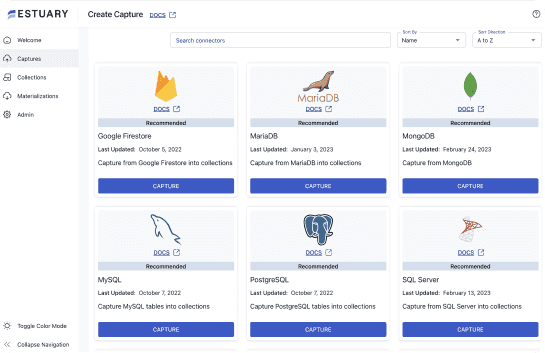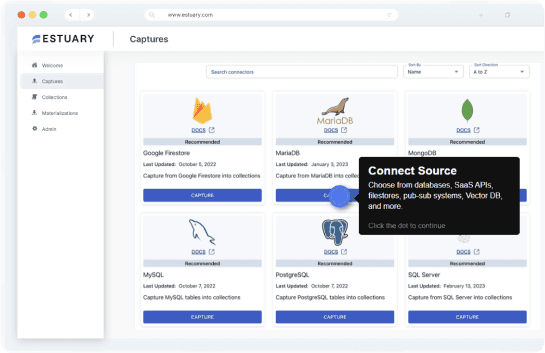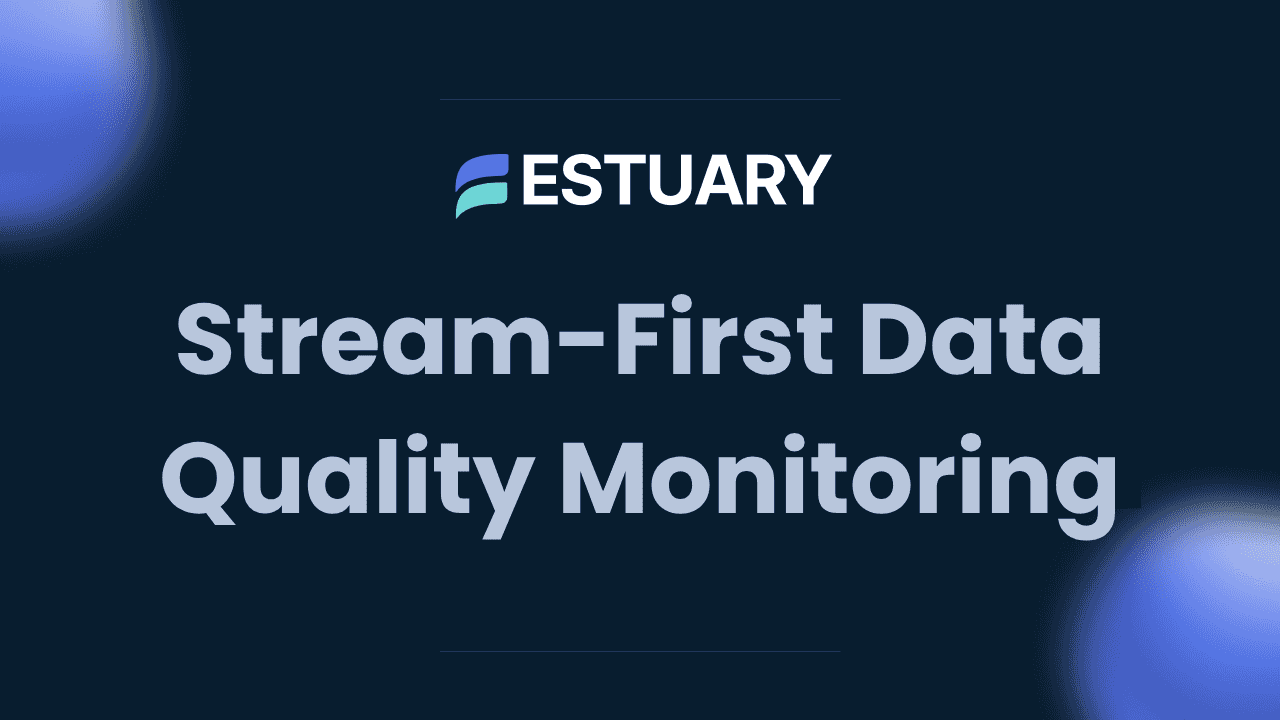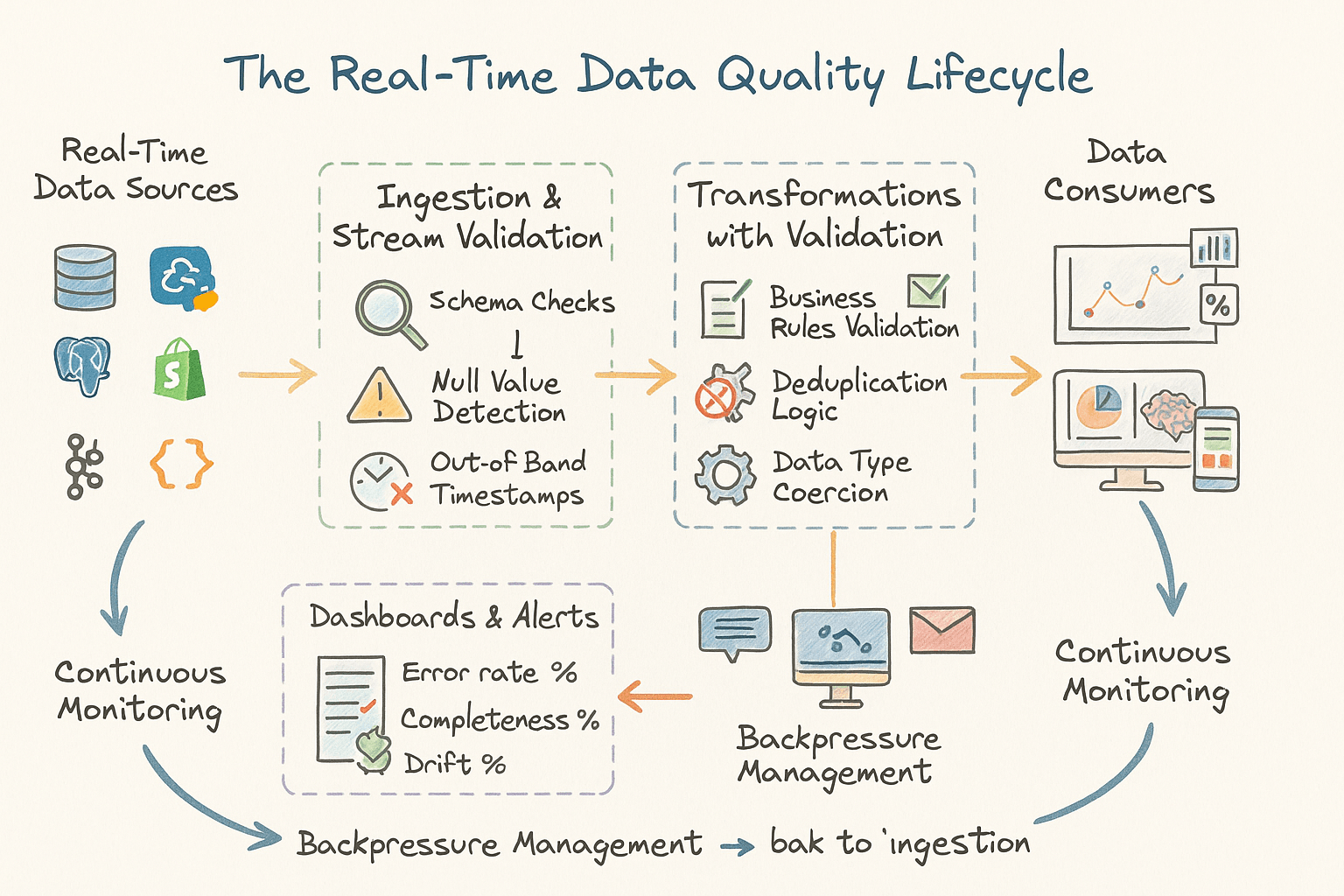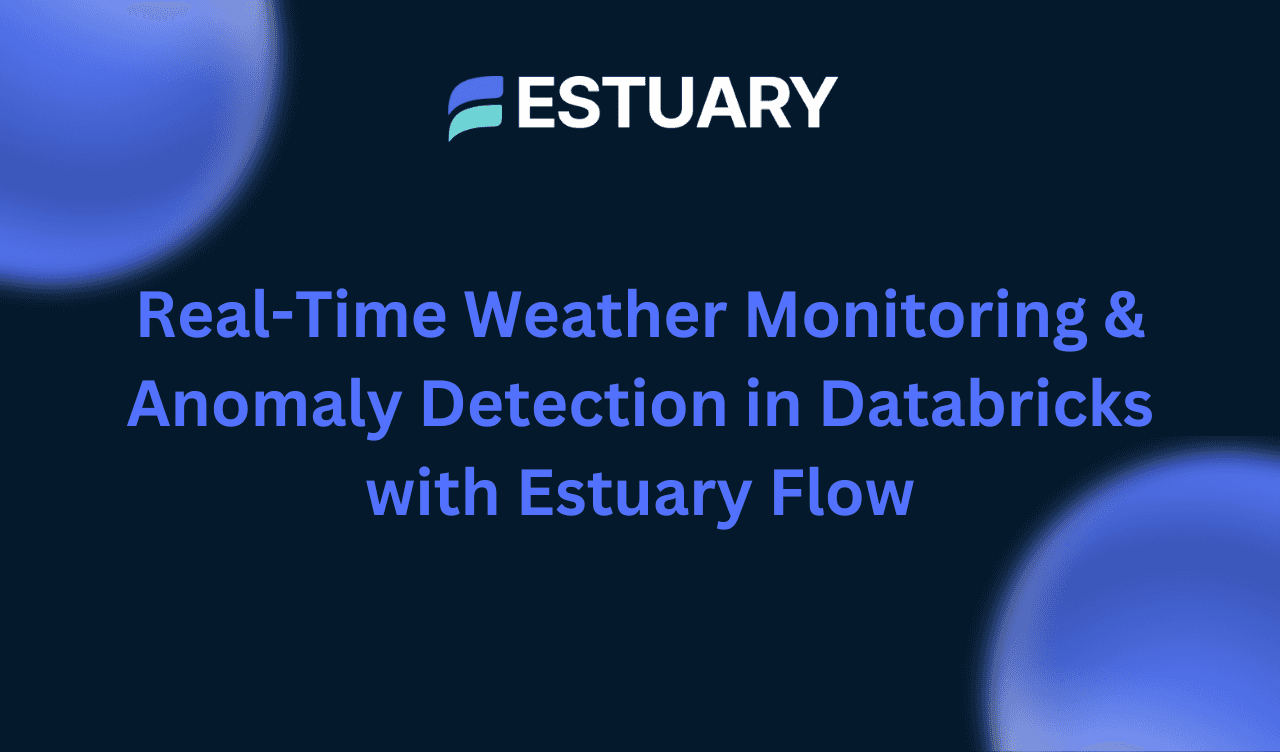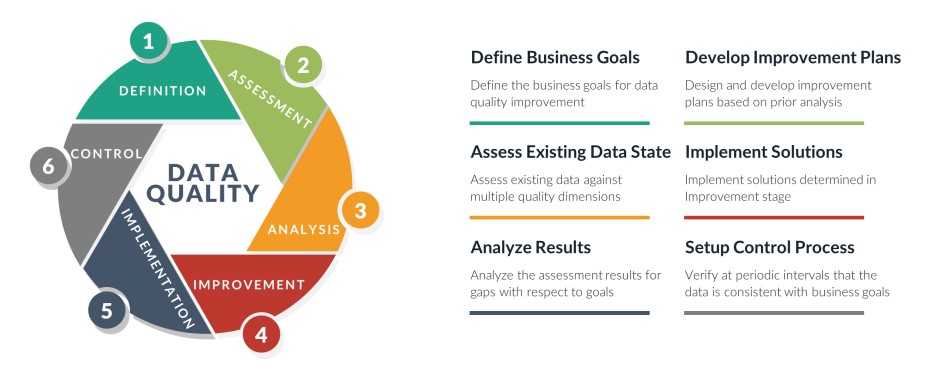
Introduction: Why Real-Time Data Quality Monitoring Matters
What if your data pipeline could flag bad records the moment they arrive, before they corrupt dashboards, reports, or machine learning models?
That’s the promise of stream-first data quality monitoring. In the world of real-time data, errors don’t just cause minor delays. A single malformed message or missing field can break production pipelines and go unnoticed until customers or stakeholders feel the impact.
Today’s modern data stacks rely more than ever on streaming architectures. Whether it’s customer behavior from an event stream, product changes from a database, or sensor updates from IoT devices, data is constantly flowing. But with that speed comes fragility.
Batch systems gave us time to validate and clean data before use. Real-time systems don’t. You need to detect issues instantly, act quickly, and ensure high-quality data is always in motion.
In this guide, we’ll explore what stream-first data quality monitoring is, how it differs from traditional approaches, and how teams can design pipelines that stay trustworthy even at high velocity.
What is Stream-First Data Quality Monitoring?
Stream-first data quality monitoring is the practice of validating, profiling, and alerting on data as it flows through real-time pipelines. Unlike traditional batch data quality checks that run hours or days after data arrives, stream-first monitoring happens immediately, on every record or micro-batch.
The goal is simple: catch issues as early as possible so they don’t propagate downstream.
Instead of waiting to validate a CSV after it lands in a data warehouse, stream-first systems inspect the data as it's ingested, transformed, or delivered to a target system. These checks can include:
- Schema validation: Are all required fields present and correctly typed?
- Null or missing value detection: Are any critical fields empty?
- Anomaly detection: Is this metric unusually high or low?
- Rule-based validation: Does the value of status match allowed values like “active” or “inactive”?
- Out-of-order event checks: Are timestamps arriving in the correct sequence?
By integrating these checks directly into your streaming pipeline, you reduce the time to detection from hours to seconds. It’s a shift from “data quality as a report” to data quality as a real-time signal.
This approach is especially useful in modern architectures where:
- Data powers live dashboards or embedded analytics
- You need to maintain service-level agreements (SLAs)
- Late or bad data impacts customer experiences
- Systems must support compliance and auditability in motion
Stream-first monitoring transforms data quality from a static checklist into a dynamic, continuous process that scales with your business.
Why Traditional Data Quality Methods Fall Short in Streaming Environments
Traditional data quality methods were built for batch systems. Think nightly ETL jobs, static tables, and warehouse-centric reporting. In that world, you had the luxury of time. You could run complex validation queries, check for missing fields, and review outputs before anyone ever saw the data.
But streaming data doesn’t wait.
Here’s why classic approaches often fail when applied to real-time pipelines:
1. Delayed Detection
Batch validation checks happen long after data is ingested. If there’s an issue, it might take hours or even days to discover. By the time you act, bad data has already flowed into reports, dashboards, or customer-facing applications.
2. Lack of Granularity
Traditional methods typically validate data in bulk. You check a table, not an event. That means subtle anomalies or individual outliers often go unnoticed until they snowball into bigger issues.
3. No Feedback Loop
In batch systems, you might run a quality check and generate a report. But in streaming systems, what you really need is a fast feedback loop. That means triggering alerts, rerouting data, or initiating retries the moment something breaks.
4. Inflexible Tools
Legacy data quality tools weren’t designed to integrate with modern stream processors, message queues, or event-based architectures. Trying to bolt them onto a real-time system often adds more complexity than value.
5. Hard to Scale
Streaming systems often deal with high-velocity, high-volume data. Traditional tools can’t always keep up, especially if they require multiple passes through the data or rely on heavy SQL transformations.
In short, applying old-school data quality strategies to real-time systems is like trying to fix a moving car with a wrench and duct tape. You need tools and practices that are purpose-built for speed, scalability, and continuous validation.
Benefits of Stream-First Data Quality Monitoring
Adopting a stream-first approach to data quality isn’t just about keeping up with real-time systems. It brings tangible benefits that impact everything from system reliability to customer trust.
Here’s what teams gain by validating data continuously as it flows:
1. Faster Issue Detection and Resolution
By validating each record or batch in motion, problems are surfaced immediately. No more waiting for reports or relying on users to spot broken dashboards. You can detect anomalies within seconds and take action before downstream systems are affected.
2. Improved Data Trust
When your data pipelines continuously monitor quality, stakeholders gain confidence. Teams know the metrics they’re using are fresh, accurate, and vetted. This trust improves adoption of data products and reduces second-guessing.
3. Lower Cost of Errors
Catching a problem early means it’s easier and cheaper to fix. Stream-first monitoring prevents corrupted data from propagating into storage layers, ML models, or BI tools where cleanup becomes costly and time-consuming.
4. Supports SLAs and Compliance
In regulated industries or mission-critical environments, ensuring data integrity is a must. Real-time quality monitoring allows teams to meet SLAs for freshness, accuracy, and availability, while also creating auditable trails of system behavior.
5. Better Operational Agility
With a stream-first setup, teams can iterate faster. New data sources or schema changes can be validated immediately, reducing rollout risks. The result is greater confidence to innovate without sacrificing quality.
6. Context-Aware Monitoring
Since data is validated within the context of its stream (e.g., task, topic, source), it’s easier to localize issues. Instead of generic quality metrics, teams get actionable, source-specific insights.
Stream-first data quality is more than a nice-to-have. It’s an essential layer in the modern data stack that empowers teams to move quickly without compromising on trust, accuracy, or performance.
Key Features to Look For in Stream-First Monitoring Tools
Not all data monitoring tools are built for streaming. To ensure you're investing in a system that can truly support real-time validation, look for these essential features:
1. Schema Validation in Real Time
Your tool should be able to inspect every incoming record and validate it against an expected schema, immediately. This includes checking for required fields, types, ranges, and formats before the data moves downstream.
2. Custom Rule Definition
You need the ability to define your own validation rules based on business logic, not just technical constraints. For example, “customer age must be greater than zero” or “order total must equal item total plus tax.” These rules should be applied as part of the data stream.
3. Event-Level Anomaly Detection
Instead of relying only on aggregates, your monitoring system should be able to flag anomalies at the individual record level. It should also support pattern recognition across time windows and streaming joins where applicable.
4. Real-Time Alerting and Routing
Once a rule is violated or an anomaly is detected, the system should support immediate alerting via Slack, email, or your incident management platform. Even better, it should support rerouting bad records to a quarantine stream or dead-letter queue.
5. Native Integration with Streaming Systems
Look for support for tools like Kafka, Pulsar, Apache Flink, and cloud-native platforms. Your monitoring tool should plug directly into your pipeline without requiring excessive transformation or batch staging.
6. Low-Latency Processing
To be truly stream-first, data quality checks must not introduce noticeable delays. The tool should process millions of records with minimal overhead, maintaining both performance and accuracy.
7. Metrics and Observability APIs
Finally, observability is key. Your tool should expose metrics such as the number of failed validations, error rates by field, and latency, so you can monitor pipeline health via Prometheus, Datadog, or your preferred dashboard.
A tool that checks these boxes doesn’t just monitor your data. It actively protects your systems, your users, and your business decisions in real time.
Best Practices for Implementing Stream-First Data Quality Monitoring
Stream-first monitoring can be incredibly powerful, but only when done thoughtfully. These best practices help ensure your data quality monitoring is effective, scalable, and aligned with your business needs:
1. Validate Early in the Pipeline
Place validation as close to the source as possible. Whether you're ingesting from databases, APIs, or streams, catching bad data early prevents it from spreading across your system.
2. Start with High-Impact Fields
Not all data fields are equal. Focus your initial rules on critical fields like IDs, timestamps, and pricing data. These have the biggest impact when incorrect and are the most likely to disrupt downstream processes.
3. Use Quarantine Streams for Invalid Records
Don’t just drop bad records. Route them to a side stream or dead-letter queue. This gives you the chance to inspect and fix issues later without losing valuable context or metrics.
4. Define and Version Schemas Explicitly
Schema evolution is a reality in modern data systems. Make sure you use a tool that supports schema versioning and validation to detect incompatibilities as changes roll out.
5. Correlate Quality Failures with Downstream Impact
When data fails validation, log metadata like the source, timestamp, and affected systems. This lets you measure the real-world impact and prioritize fixes based on downstream dependencies.
6. Integrate Alerts into Incident Workflows
Real-time data quality issues should follow the same process as infrastructure incidents. Trigger alerts in the same systems (e.g., PagerDuty, Opsgenie, Slack) so they’re visible and trackable like any production issue.
7. Review Failures Regularly
Bad data isn’t always malicious. It may reflect legitimate business changes or signal the need to adjust your models. Create regular review cycles to evaluate quarantined records and update rules as needed.
By following these practices, you’ll not only reduce the number of issues caused by bad data, you’ll also build a more resilient and intelligent pipeline architecture.
Where Estuary Fits in Stream-First Data Quality Monitoring
Estuary is not a dedicated data quality tool, but it plays a vital role in enabling stream-first data quality monitoring as part of your real-time data stack. Its architecture is built to handle continuous, low-latency data movement, and it provides the observability and control needed to monitor quality at every step.
1. Built-In Schema Validation
Estuary Flow enforces JSON schema validation on all collections, both during capture and materialization. This means malformed or incomplete records can be caught early before they move downstream, ensuring data consistency across the pipeline.
2. Quarantine Streams via Derivations
Using Flow’s derivations, you can route records that fail quality rules into separate collections for review. This pattern allows you to implement real-time dead-letter queues or data quarantines for invalid data without losing context.
3. OpenMetrics API for Observability
Estuary’s OpenMetrics API gives real-time insight into pipeline performance, document throughput, and error logs. These metrics can be integrated into Prometheus or Datadog, enabling you to create alerts for sudden drops in data volume, high error rates, or lagging pipelines.
4. Integrations with Monitoring Tools
Because Estuary exposes standard metrics, it can easily be connected to your broader observability and incident management stack. This allows data quality incidents to be treated like system alerts—prioritized, triaged, and resolved quickly.
5. Transparent and Reproducible Data Logic
All logic in Estuary—from schema enforcement to derivation rules—is defined as version-controlled code in Flow catalogs. This transparency makes it easy to audit, update, and share data quality logic across teams.
In short, Estuary provides the building blocks to enforce, observe, and respond to data quality rules in real time. While it may not replace specialized anomaly detection tools, it adds strong validation, routing, and observability to any stream-first monitoring strategy.
Conclusion
Stream-first data quality monitoring is no longer optional—it’s essential. As organizations adopt real-time architectures, the cost of bad data multiplies. Broken dashboards, failed transformations, and customer-facing errors can all trace back to unchecked records that slipped through at high speed.
Traditional batch validation methods can’t keep up with today’s continuous data flows. What’s needed is a monitoring approach built for the stream: one that validates as data arrives, observes pipeline health in real time, and responds instantly to quality failures.
Tools like Estuary Flow make it possible to build that system. By combining schema enforcement, transformation logic, and open metrics, you gain the foundation for real-time data pipelines that are not just fast, but trustworthy.
With the right strategies and observability in place, you can confidently build data products, analytics workflows, and machine learning systems that rely on fresh, accurate, and actionable data. Quality at the speed of streaming is achievable—if you monitor for it from the start.
FAQs
Why is real-time data quality important for modern data pipelines?
Can Estuary help with real-time data quality monitoring?

About the author
Team Estuary is a group of engineers, product experts, and data strategists building the future of real-time and batch data integration. We write to share technical insights, industry trends, and practical guides.

